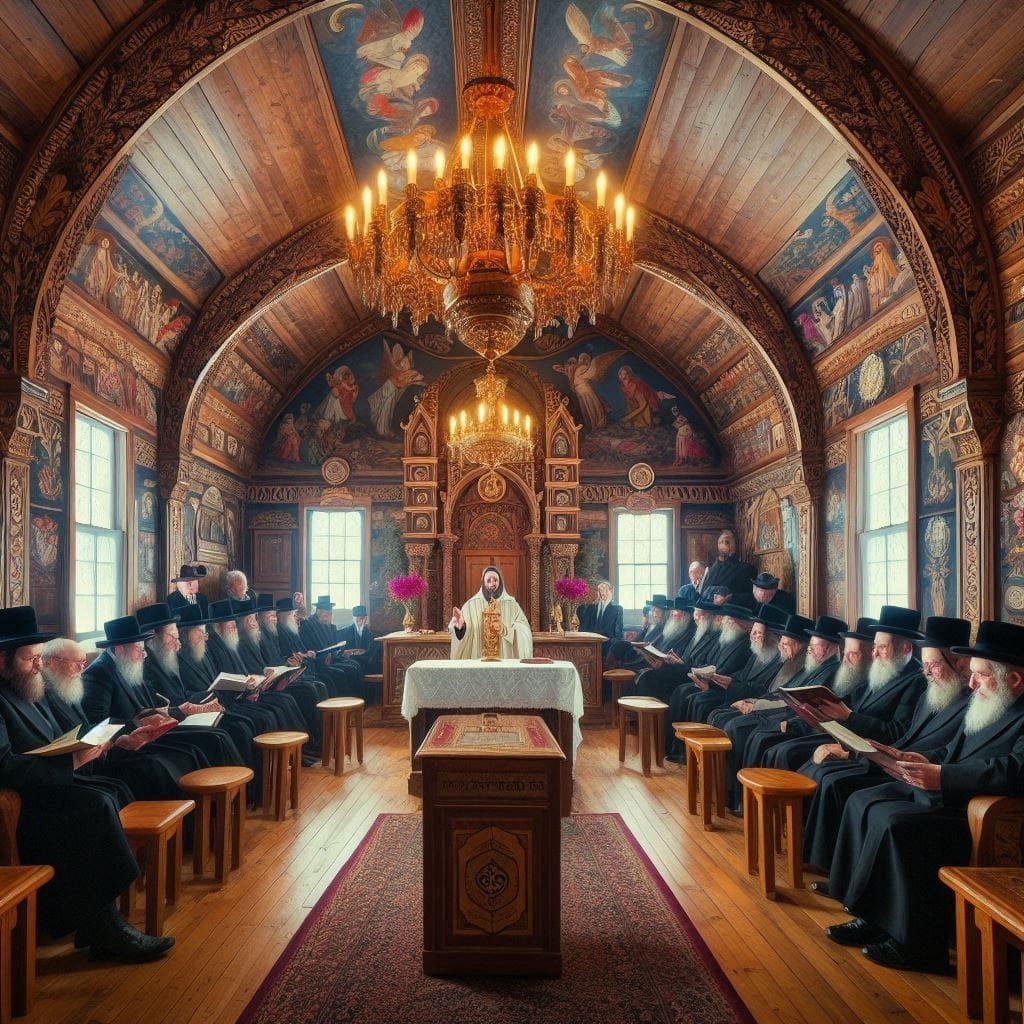
B"H
The Hebrew Rooters Sons of Tzadok, who claim to follow the Qumran (Zadokite) calendar, have found themselves in an ironic contradiction. Normally, they fiercely reject the Catholic Church, seeing it as a corrupted institution. However, when Pope Benedict XVI stated in 2007 that Yeshua may have followed the Essene calendar, they suddenly agreed with the very institution they oppose. This reveals a major inconsistency in their argument.

1. The Contradiction: Agreeing with the Pope While Rejecting the Church
The Hebrew Rooters Sons of Tzadok typically teach that:
The Catholic Church is a false system, filled with pagan influences and doctrinal corruption.
Christianity as a whole abandoned the true Torah by following a Roman calendar instead of the Qumran (Sons of Tzadok) calendar.
The true biblical faith was preserved by the Zadokites/Essenes, not by Pharisaic Judaism nor Christianity.
However, in a stunning contradiction, they support Pope Benedict XVI’s statement that Yeshua celebrated Passover using the Essene calendar.
This means:
They accept a Pope’s interpretation of history when it aligns with their beliefs.
They reject the Catholic Church on everything else, yet they use its scholarship when it benefits their argument.
They accuse the Catholic Church of falsifying history, but they quote it as a source of truth when it agrees with them.
This self-contradiction exposes their lack of consistency and undermines their credibility.

2. Why This Contradiction Exposes Their Faulty Reasoning
The Hebrew Rooters Sons of Tzadok are inconsistent for the following reasons:
A. They Accuse the Catholic Church of Corruption but use the same source.
They claim Catholic doctrine is false and that the Church altered history.
Yet, when Pope Benedict XVI supports Qumran calendar theory, they suddenly agree the Catholic Church is correct.
How can they trust a Pope on this one issue while rejecting everything else the Church teaches?
B. If They Accept the Pope’s Scholarship, They Must agree with Catholic Historical Authority
If the Pope’s statement about Yeshua using the Essene calendar is trustworthy, then so is Catholic scholarship on other historical issues.
But this would mean admitting that Catholic scholars have preserved accurate historical records, which Hebrew Rooters typically deny.
They can’t selectively accept Catholic historical claims when it suits them and reject the rest.
C. Their Calendar View Opposes Both Judaism and Early Christianity
The Pharisaic (Rabbinic) calendar was the dominant Jewish calendar in Yeshua’s time.
The early believers in Yeshua (including his own disciples) followed the Pharisaic calendar we see throughout the Gospels and Epistles, not the Qumran calendar.
If Hebrew Rooters reject the Rabbinic calendar, they are not following the way of Yeshua or the early Jewish believers.

3. The Proper Path: Following the Rabbinic Calendar
The correct historical and halachic position is to follow the Rabbinic calendar, as it is the true methodology of Yeshua’s own Jewish practice. Here’s why:
A. Yeshua Followed the Mainstream Jewish Calendar
Yeshua went to the Temple on Jewish holidays (John 7:10, Luke 2:41-42), which means he followed the methodology of what became Pharisaic calendar.
He did not separate himself from the Jewish people as the Essenes did.
If he had used a different calendar, he would have celebrated Pesach on a different day than the rest of the Jewish world, yet the Gospels indicate he was in Jerusalem at the same time as everyone else.
B. The Early Believers in Yeshua Continued Using the method and rationale (following the Rabbinic Court) of what became the foundation Rabbinic Calendar
The first followers of Yeshua in Jerusalem continued to observe Jewish feasts at the same time as the rest of the Jewish world.
There is no historical record of early believers using the Qumran/Zadokite calendar.
If the Apostles followed the mainstream Jewish calendar, so should those who follow Yeshua today.
C. The Rabbinic Calendar Has Been the Standard for Over 2,000 Years
The Sanhedrin, which had the authority to determine the Jewish calendar, ruled according to Pharisaic traditions.
Even after the destruction of the Temple, Jewish communities worldwide continued using the Rabbinic calendar.
The Mishnah (Rosh Hashanah 2:8-9) confirms that Jewish authorities calculated and announced the new months, a practice that became the basis for the Jewish calendar still in use today.

4. The Key Takeaway: The Hebrew Rooters Sons of Tzadok Are Self-Contradictory
They claim the Catholic Church is corrupt but agree with the Pope when it fits their agenda.
They reject mainstream Judaism but don’t realize that Yeshua and his disciples followed what became the Pharisaic calendar.
They are caught in a logical inconsistency: either they reject all Catholic sources (including the Pope’s statement) or they must admit that Catholic historical research is valid.
The proper way to follow Yeshua is not through the Qumran calendar, but through the Rabbinic calendar, the same one observed by Jewish communities worldwide and the same one Yeshua and his disciples followed

Final Thought
The Hebrew Rooters Sons of Tzadok cannot claim to be restoring the “true faith” while contradicting themselves. They are in an intellectual trap: if they agree with the Pope, they validate Catholic historical scholarship; if they reject the Pope, they lose one of their key arguments for the Qumran calendar.
Either way, the only consistent path is to recognize that Yeshua was a Pharisee who followed the emerging Rabbinic calendar, and Hebrew Rooters who reject this are distorting history.

Subscribe now.
Sign up for our newsletter to get the most interesting stories of the day straight to your inbox before everyone else
Created with © systeme.io • Privacy policy • Terms of service


